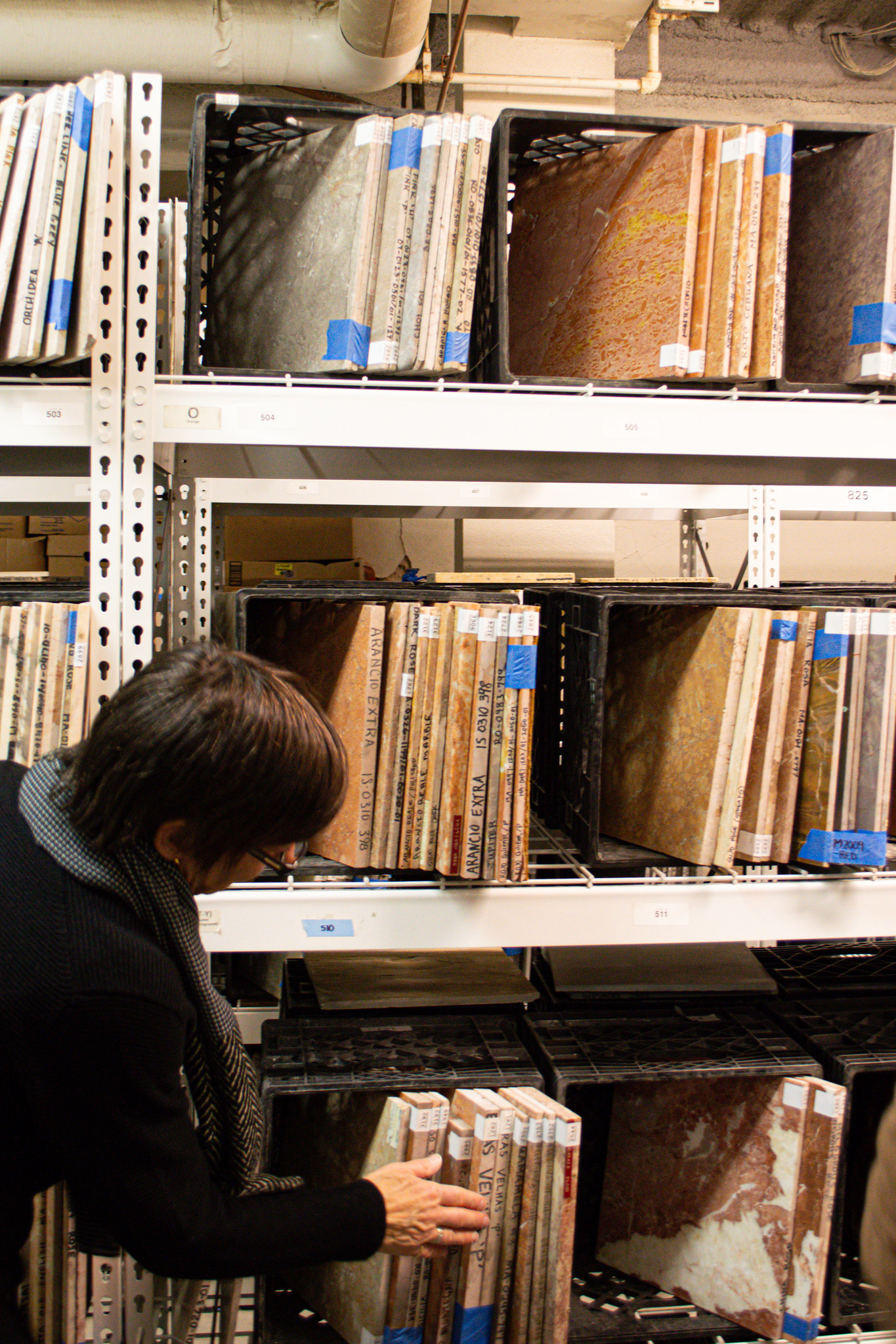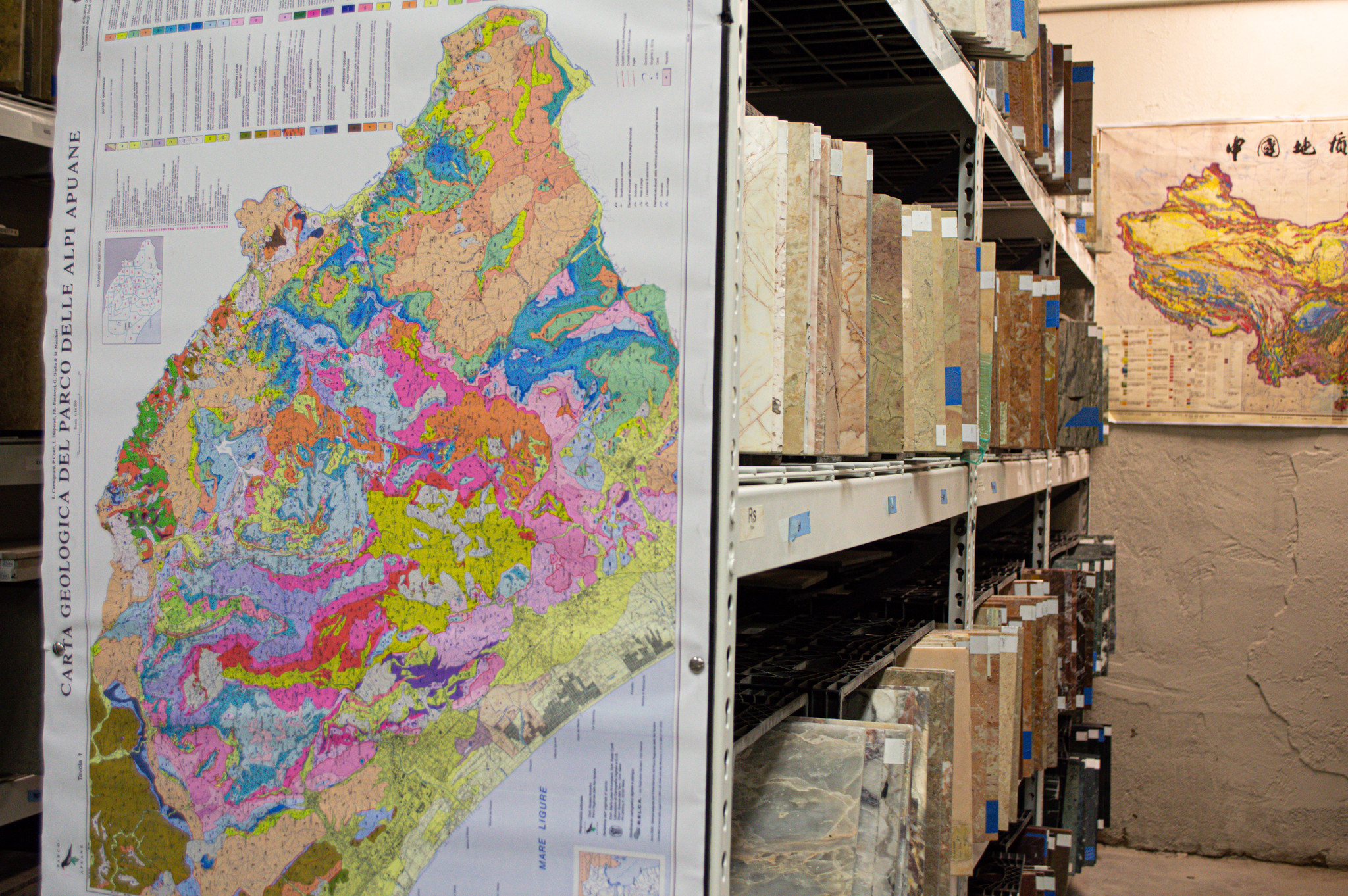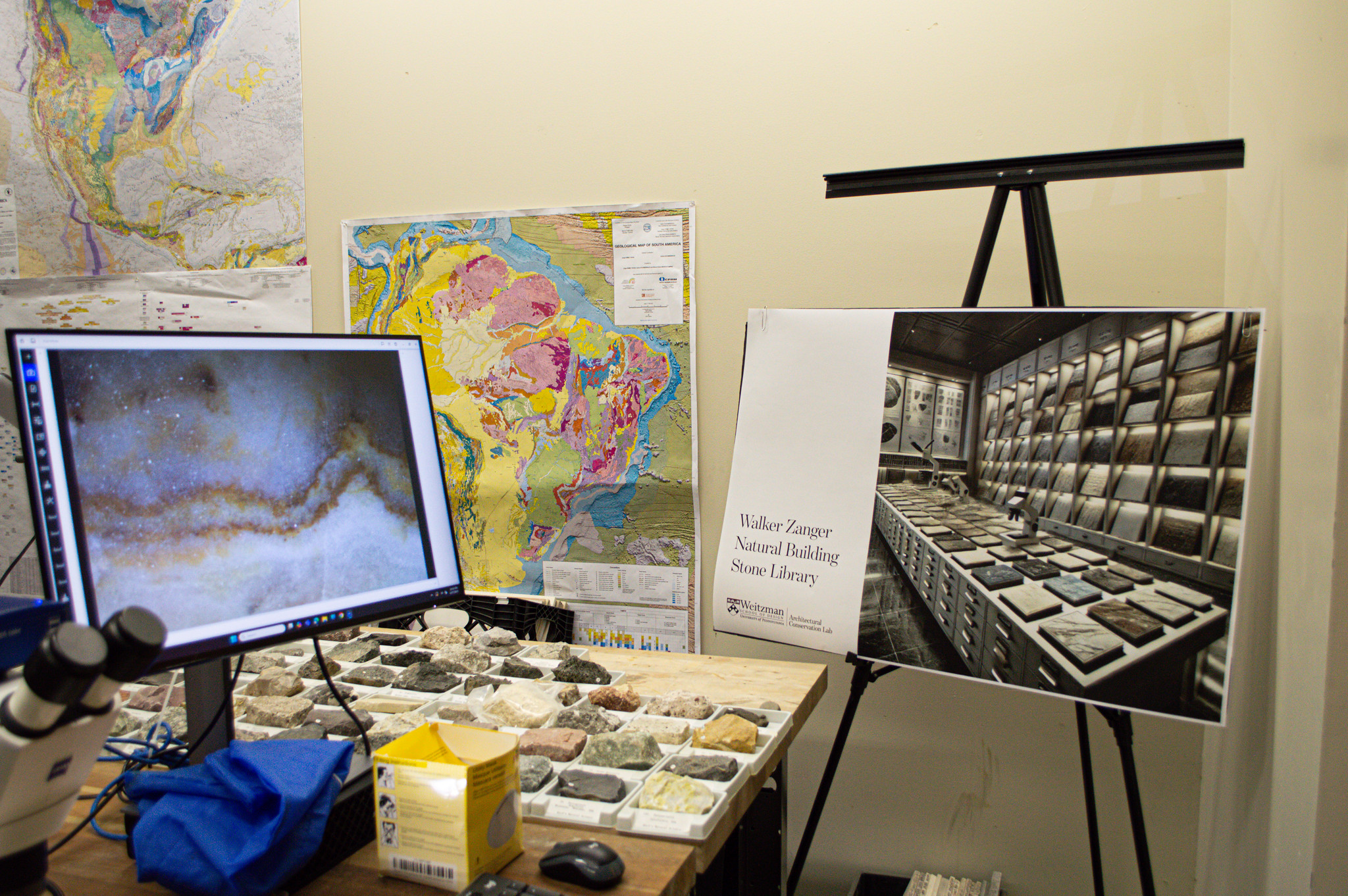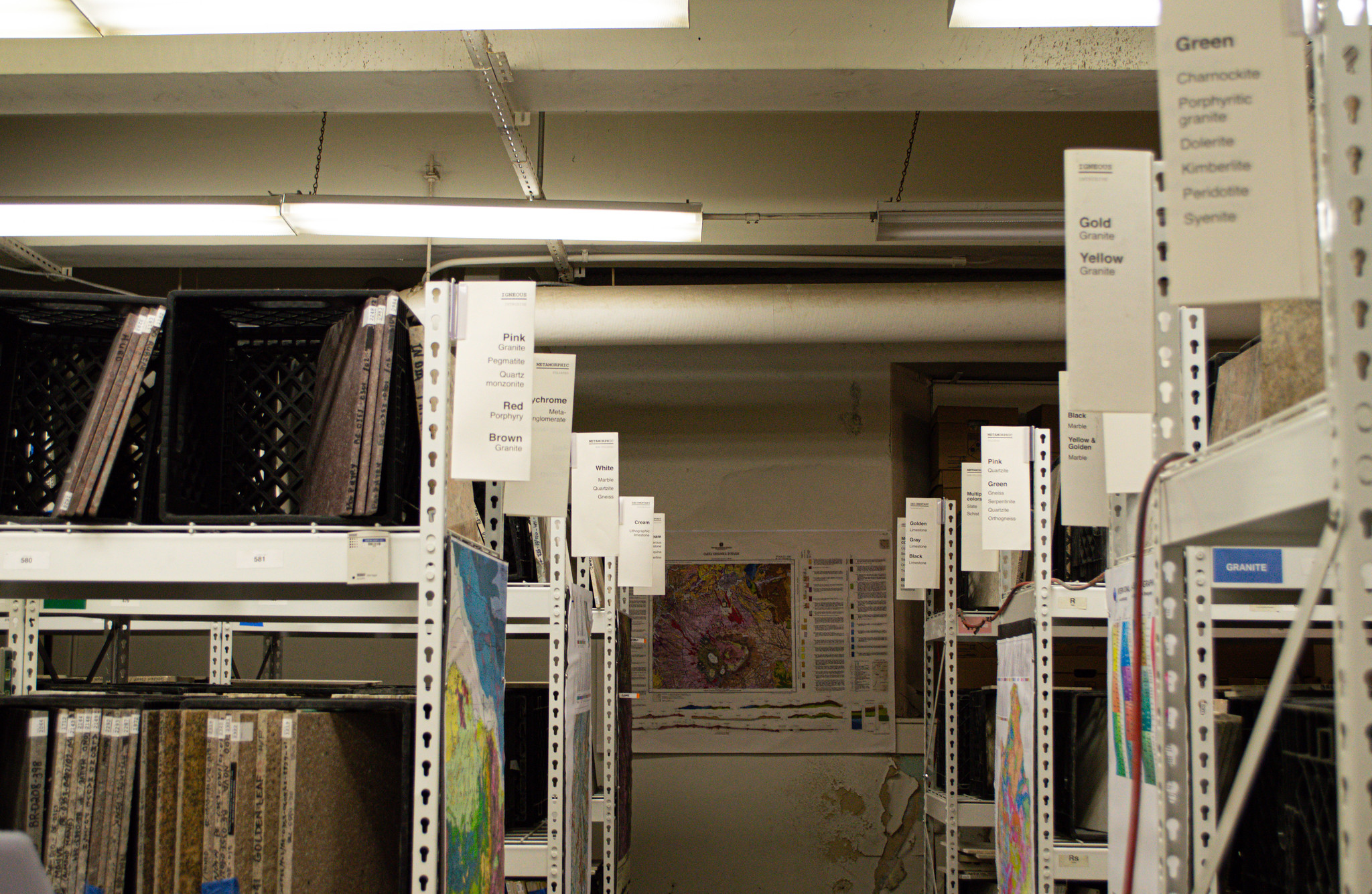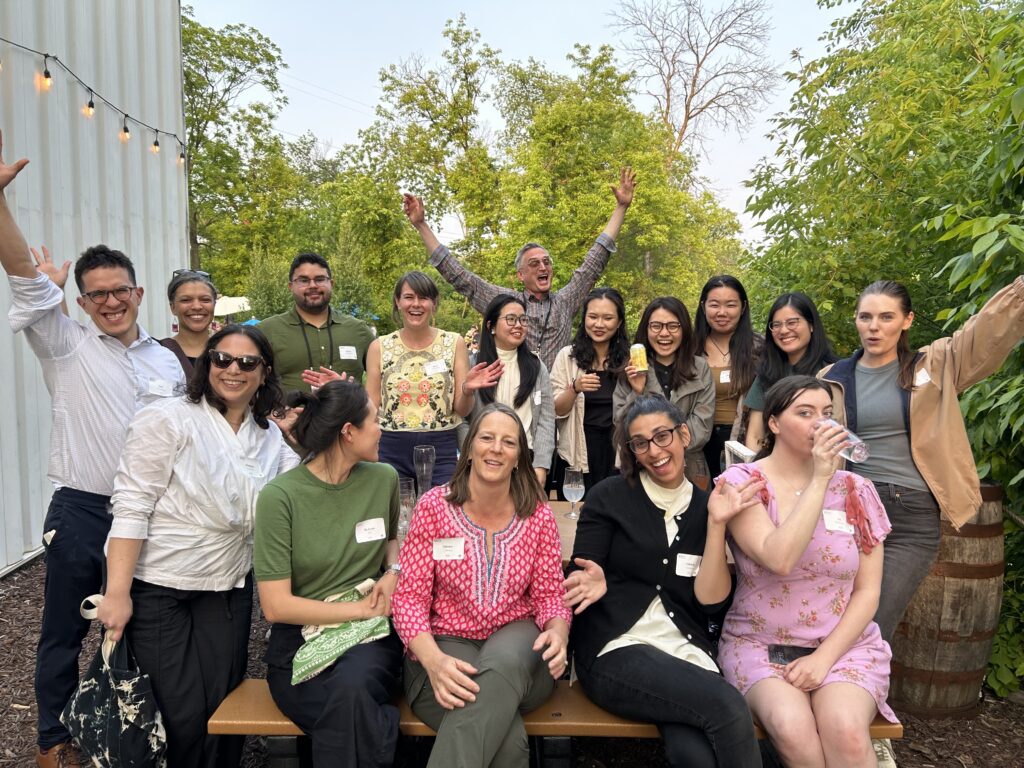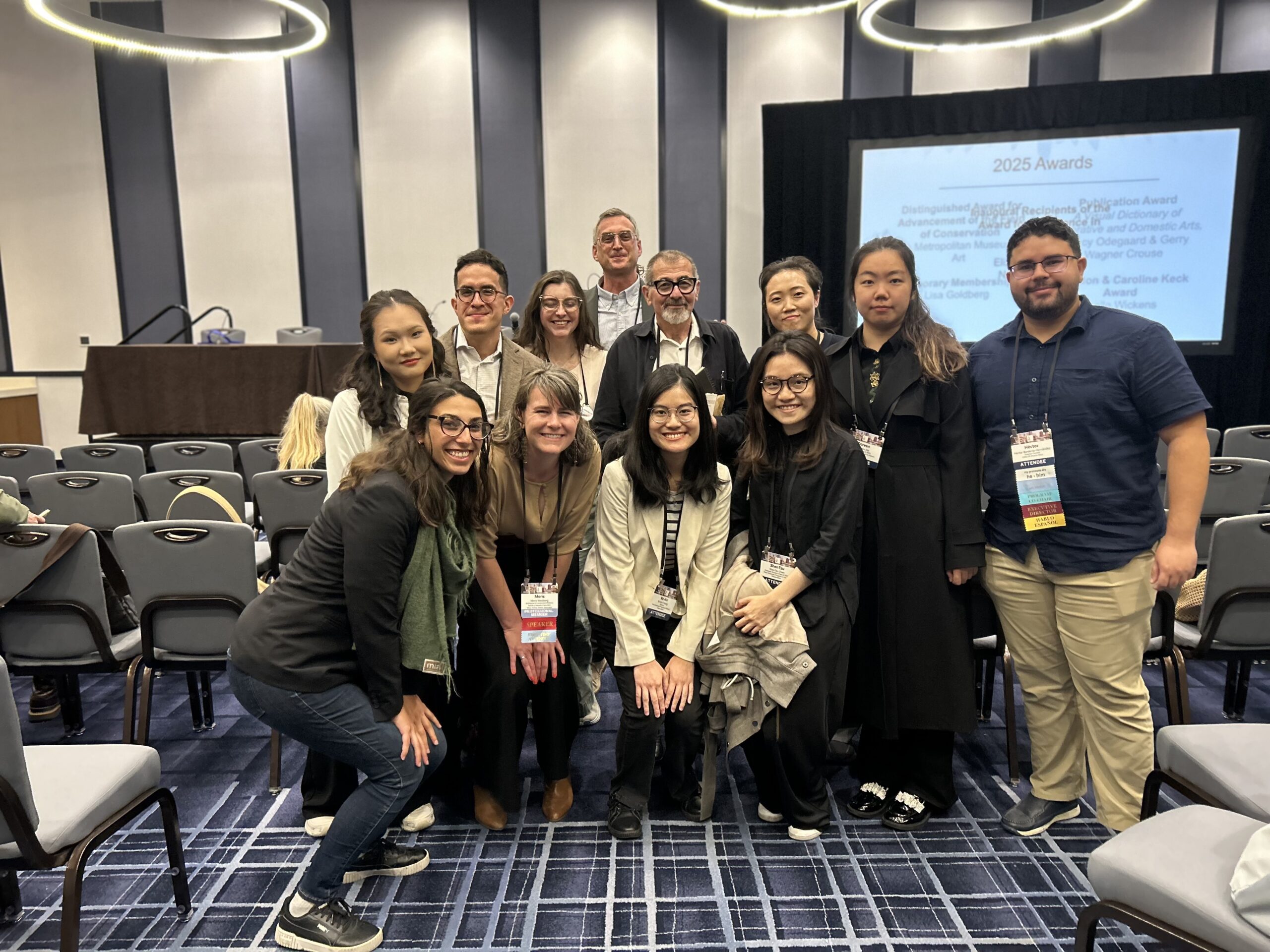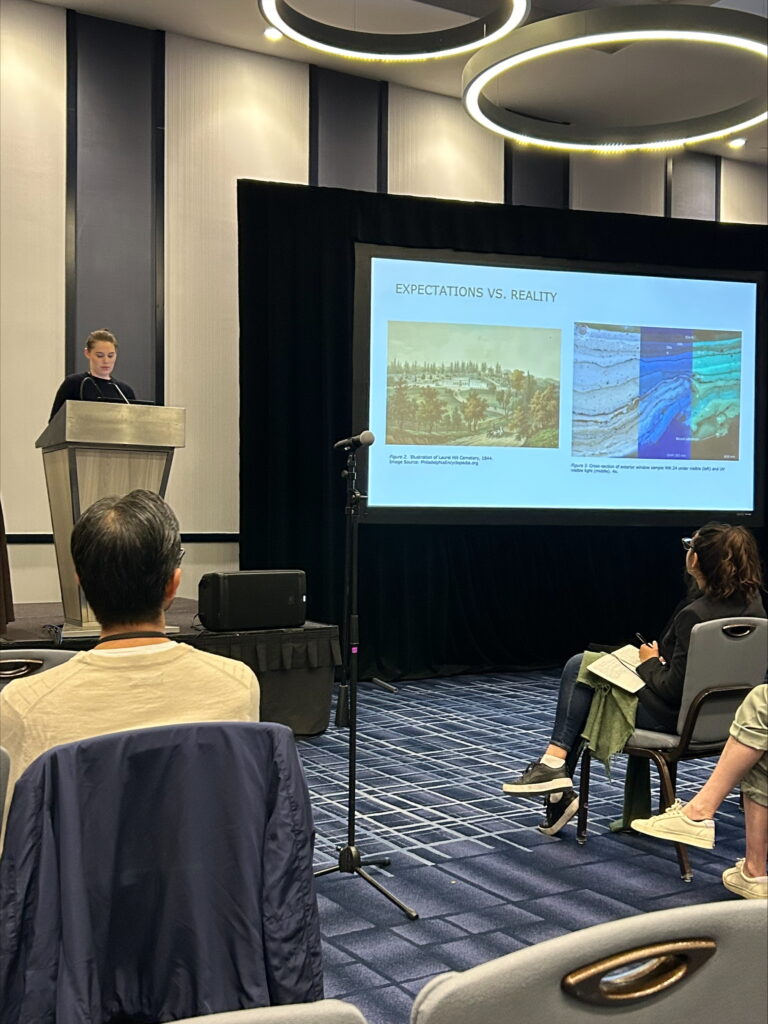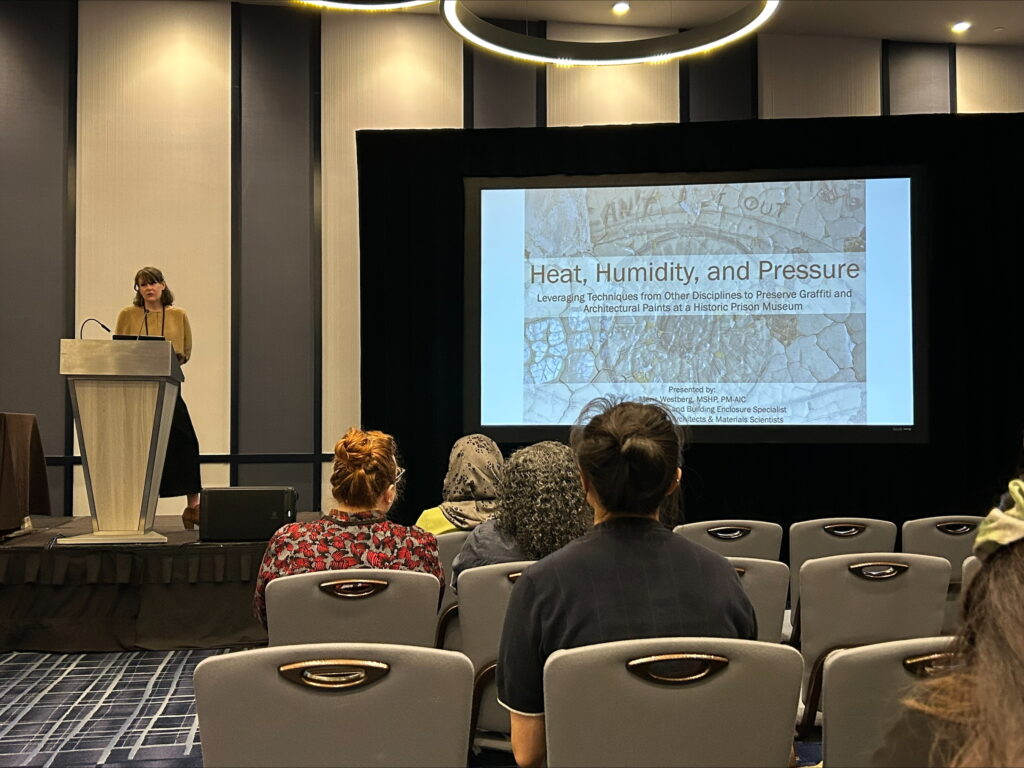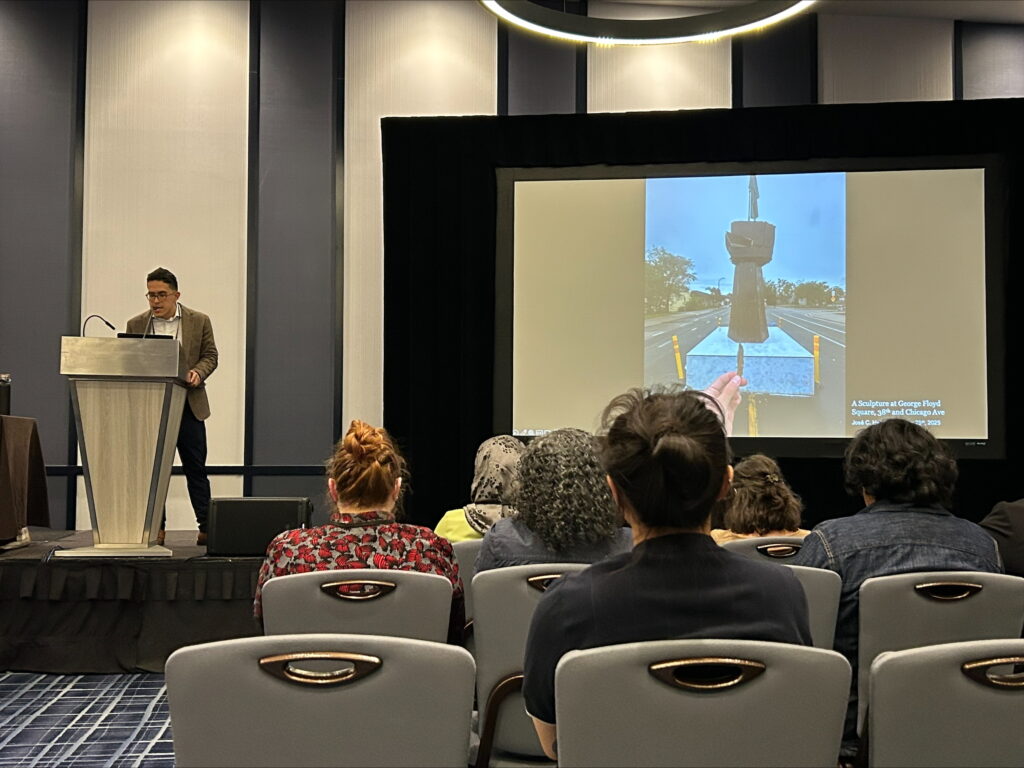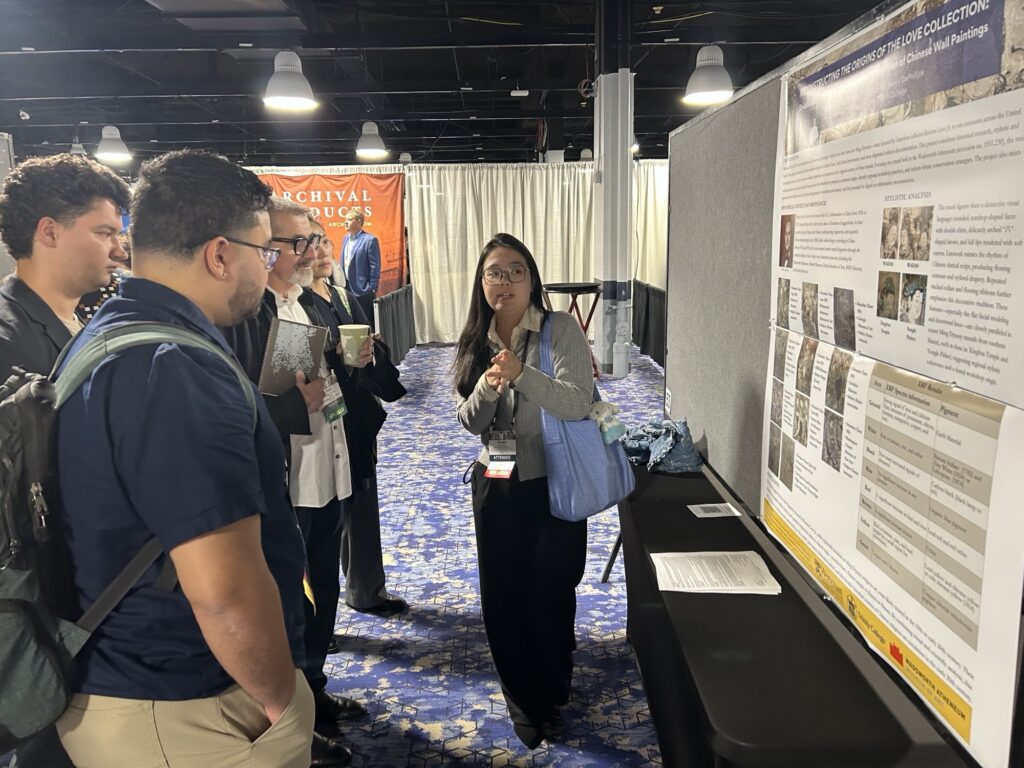Stories
Last week, Dr. Marie-Claude Boileau of the Center for the Analysis of Archaeological Materials (CAAM) and Jeanne-Marie Teutonico, former Associate Director of the Getty Conservation Institute (GCI), toured the Walker Zanger Natural Building Stone Collection in the basement of the Center for Architectural Conservation.
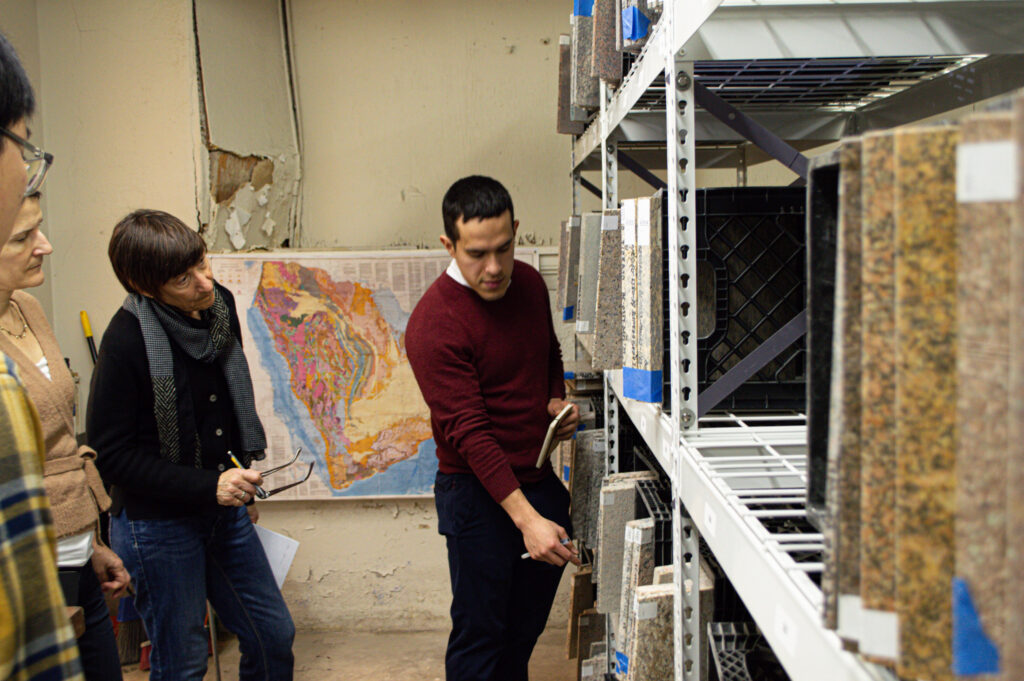
From commercial magazines to business records, geology books to stone specimens, the Walker Zanger Natural Building Stone Collection features 4,583 reference samples representing approximately 1,600 unique natural building stones sourced from quarries around the world. The collection includes commercial marbles, granites, limestones, slates, sandstones, onyx, agglomerates, alabasters, basalts, and other building stones. Notable samples include Carrara and Calacatta marble from Tuscany, Roman travertine from Tivoli, Juparana granites from Brazil, and Jerusalem stone from the Middle East.
Founded in 1952 by Leon Zanger and Marvin Walker, the company supplied stone and tile for numerous cultural institutions across the United States, including Italian marble for the Getty Villa in Malibu, CA. To recreate the villa’s ancient Roman floor patterns, the company’s Italian branch acquired antique marble from the Vatican. Other notable projects include the supply of ancient Roman travertine for Louis I. Kahn’s Kimbell Art Museum (Fort Worth, TX) and the supply of Jerusalem limestone and Westchester County marble for the renovation of the American Wing at the Metropolitan Museum of Art (New York, NY). The company also provided natural stone for numerous private residences and office buildings throughout the United States and was the first to import French limestone into the country.
Unique in both size and scope, the collection was donated in 2019 by Jonathan Zanger, director of the Natural Stone Foundation and former president of the stone company, to the University’s Center for Architectural Conservation (CAC). Most of the collection consists of 12-by-12-inch stone “coupons” or slabs, but it also includes a remarkable assortment of ephemera, such as geological posters, commercial magazines, books, and small embedded rock samples originally distributed to customers. This collection will be of interest to researchers across multiple disciplines, including architecture, historic preservation, geology, archaeology, and engineering.
Currently, the collection’s more than 4,500 reference samples are being processed by graduate students Shufan Xiao (MSHP ‘25) and ShenTzu Chen (MSHP ‘25).
Last May, a group of Weitzman School of Design Historic Preservation students and alumni shared their research work at the fifty-third Annual Meeting of the American Institute for Conservation (AIC). The conference, held at the Hyatt-Regency Hotel in Minneapolis, Mi., between May 27th and 31st, also provided a space for students and emerging scholars to present their individual research.
Héctor J. Berdecía-Hernández (MSHP ‘20) served as Chair Emeritus of the Architectural Specialty Group (ASG) and moderated a luncheon panel discussion on the intrinsic connection between the care and maintenance of historic buildings and the preventive care of collections, reflecting on the impact and legacy of the 1992 New Orleans Charter for the Preservation of Historic Structures and Artifacts.
Donglin Chen (MSHP ’25) presented a poster in the Exhibit Hall on her research in stylistic and instrumental analysis of a northern Chinese wall painting from the Ming dynasty, believed to be between 15th–16th century.
Jiwen Fan (MSHP ’24) presented her findings on the effectiveness of biological amendments for the conservation of earthen built heritage. Through laboratory testing at the ACL, Fan tested the physico-mechanical properties of soil amended with psyllium husk and evaluated its feasibility as a sustainable alternative to modern synthetic amendments.
José C. Hernández (MSHP ’22) shared the ongoing digitization efforts of the Historic Building Materials Collection at the ACL, laying out the unique complexities of managing special collections like building materials and the implications of digitization of our material world.
Nicola Macdonald (MSHP ‘23) presented her findings on the surprising monochromatic palette used at Ivy Lodge, Germantown, a departure from Andrew Jackson Downing’s signature picturesque palette. Her research relied heavily on visible and UV visible light microscopy at the ACL with samples cross-sectioned from both interior and exterior of Ivy Lodge.
Meris Westberg (MSHP ’21) was a twice presenter and panelist. She presented on leveraging techniques and bodies of knowledge from other conservation disciplines (paper, paintings, and objects) to architectural paint at the Burlington County Prison Museum (a conservation project by Jablonski Building Conservation). Her second presentation focused on the policy gap between building codes and collections management in flood preparedness at museums and sites in historic buildings. She was a panelist on the Architecture Specialty Group (ASG) and Preventive Care Network (PCN) luncheon on the impact of the New Orleans Charter to collections management in historic buildings, moderated by Héctor J. Berdecía-Hernández (MSHP ’20) and Kelly McCauley.
On Friday evening, the Weitzman School of Design organized a Happy Hour reception with alumni at Utelpils Brewing where Professor Andrew Fearon (MSHP ’02) toasted on behalf of Frank Matero, Chair of the Department in Historic Preservation.

